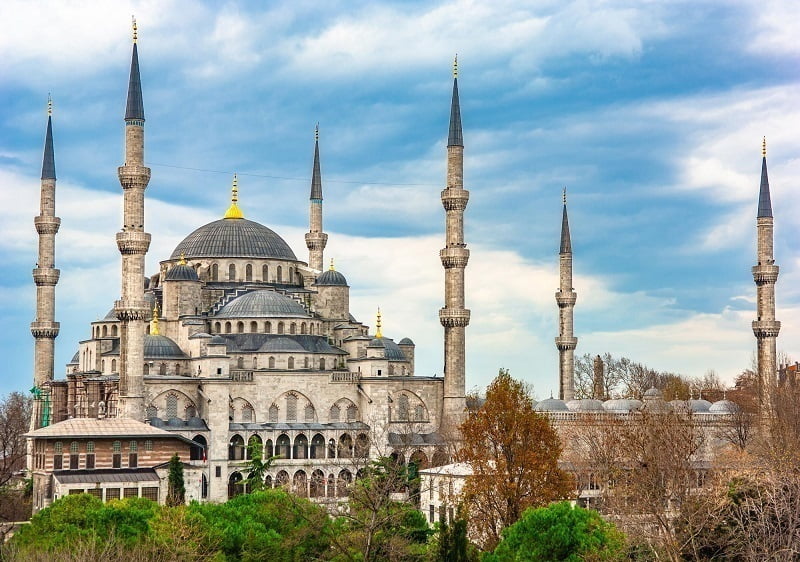
The Blue Mosque, known as Sultanahmet Cami in Turkish, was founded by the Ottoman Sultan Ahmet I and constructed by the architect Sedefkar Mehmet Aga in 1609-1616. The Blue Mosque to be the most splendid of the imperial mosques in the city, with its graceful cascade of dome and semidomes, its six slender minarets accentuating the corners of the courtyard and the building, the lovely colour of the stone set off by gilded ornaments on domes and minarets. It’s generally imposing but gracious proportions.
Like that of the other imperial mosques, the interior plan of the Blue Mosque recalls in a general way that of Hagia Sophia. Still, in this case, the difference is greater than the other mosques. It is almost a square, 51 metres long by 53 metres wide, covered by a dome, 23,5 metres in diameter and 43 metres high, resting on four pointed arches and four smooth pendentives.
The Blue Mosque has 260 windows. These were once filled with coloured glass, which would have tempered the too-crude brightness; now, they are slowly being replaced with modern imitations. The blue tiles, giving the famous name to the mosque, are Iznik tiles of the best period, and they are worth seeing. The magnificent floral designs display the traditional lily, carnation, tulip and rose motifs, cypresses, and other trees, all in exquisite colours; subtle blues and greens predominating. The mihrab and minbar of White Proconnesian marble are also original. They are the incredible works of that period.
The Ottoman mosques were practising and were foundations that provide education, healthcare, food, and accommodation to care-seeking. So, the Ottomans added school, Hospital, Library, Kitchen and Dormitory in every mosque. Those parts of the Blue Mosque are located nearby. Unfortunately, some of them have been destroyed.